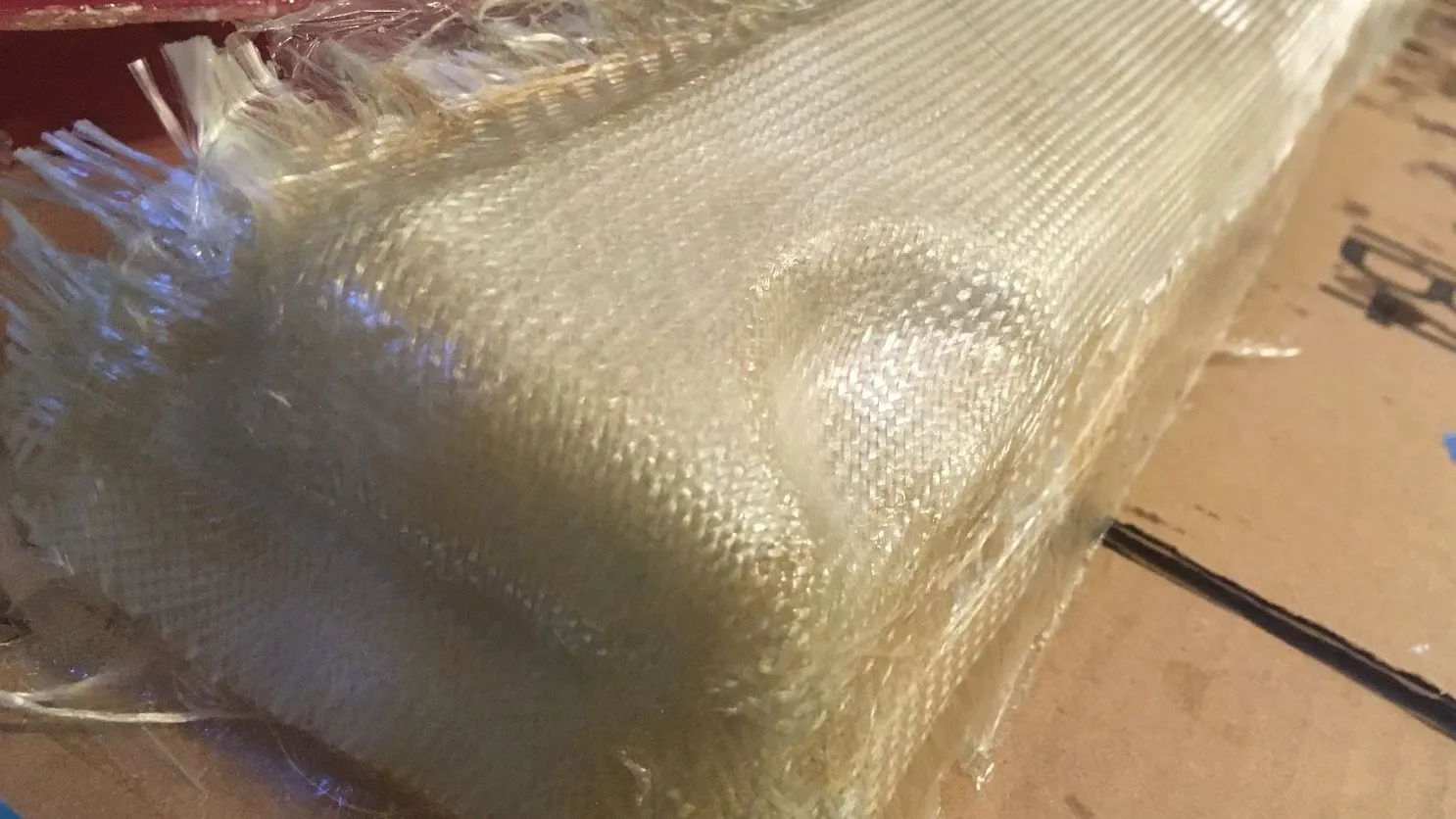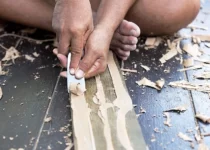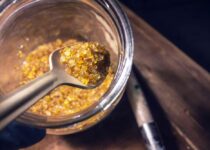Gluing Fiberglass simplified
Due to the extreme durability of fiberglass, gluing it can be difficult. Surface preparation for fiberglass is essential to ensure that the surface will have sufficient contact. Most adhesives are excellent, but one is the best option for long-term use. These fiberglass adhesives also offer budget-friendly solutions for DIY enthusiasts and hobbyists.
What is Fiberglass?
Fiberglass is made of glass fibers that are woven together into a mesh. Fiberglass is similar to the fabric bonds that hold clothes together. You can use it for almost any application, such as boat hulls and RVs.
It is also lightweight, durable, and relatively inexpensive. Because of this, constructors prefer it to other materials for building. Fiberglass can be used to make boats, windows, and roofs. Fiberglass is easy to work with and inexpensive. Fiberglass can crack on its surface. Then you’ll need to fix it.
Most home improvement stores offer resin kits, which you must mix manually before applying them to the cracks. You can buy adhesives that are already mixed. The caulking gun tip is often included to help bond the fiberglass together.

What Glues Can You Use To Glue Fiberglass?
Here are the types of glue that we would use for gluing fiberglass permanently:
-
Epoxy Resin
Epoxy resin works much better than superglue for gluing glass to fiberglass. It is stronger and more durable than super glue. Two types of epoxy resin are available: two-part and one-part. The one-part epoxy is easier to work with but not as strong. The two-part epoxy resin is more difficult to use because it requires mixing the two parts before use. However, this creates a stronger adhesive.
-
JB Weld
It forms a strong, durable bond with the fiberglass and bonds quickly. When mixed together, it creates a strong adhesive. It’s resistant to chemicals, extreme temperatures, and abrasion. Its strength depends on the way it is applied. It can create a strong bond if it is used correctly.
Before applying, it is important to read the instructions and ensure the surface is clean and completely dry. JB Weld may not be the best option for every application involving fiberglass, but it can work well for some jobs. JB Weld is an excellent choice for bonding metal to fiberglass when used correctly. JB Weld offers a strong bond and can last many years.
-
Polyester Resin
Another option to glue fiberglass to fiberglass is polyester resin. It is similar to epoxy resin in that it forms a strong bond. However, superglue is stronger. Two types of polyester resin are available: two-part and one-part. The one-part polyester is easier to work with but not as strong. The two-part polyester resin is more difficult to use because it requires mixing the two parts before use. However, this creates a stronger adhesive.
-
Liquid Nails
It can be a daunting task to glue fiberglass. Liquid Nails are a great choice when it comes down to adhesives for fiberglass. Liquid Nails are adhesives specifically developed to bond fiberglass with other materials. The product is easy to apply and can be done with a caulk or brush. It is tough and durable and can withstand the elements.
The material is weather-resistant and waterproof, so it’s perfect for outdoor projects. The fiberglass will harden quickly, so you need to ensure it is positioned correctly before the glue sets. Liquid Nails resist solvents and won’t crack or shrink over time.

How Can You Glue Fiberglass? Check Out These Steps
What You Need
- Rubber gloves
- Aluminum foil
- Two pieces of fiberglass
- Clean clothes
- Super Glue Plastic Fusion
If you get epoxy on your skin, use an industrial hand cleaner like Zep Reach. Use a spatula to peel off the bonded area of the skin carefully. If you have gotten epoxy in your eyes, rinse them under running water. You may need to see a doctor if needed.
Step 1
Work in a well-ventilated, clean area. Respiring epoxy is not recommended. The epoxy should be ready when the area reaches 68 degrees F.
Step 2
It is dangerous to breathe the epoxy. When the epoxy is finished, it should reach 68 degrees Fahrenheit. It should also be away from open flames because epoxy is combustible.
Step 3.
Wear rubber gloves and an apron to protect yourself from the epoxy.
Step 4
Place a large sheet of aluminum foil (at least as big as your fiberglass piece) on the surface of the work to prevent the epoxy from sticking.
Step 4
Be sure to place the fiberglass on aluminum foil.
Step 5
Make sure that the fiberglass is clean and free of dirt. Rub a towel dry over the fiberglass to remove any moisture. Let the fiberglass dry naturally for a few moments. Repeat the process with the second piece.
Step 6
Mix the epoxy solution for about a minute with a Super Glue syringe.
Step 7
The first piece of fiberglass should be coated with the epoxy. One dab of epoxy is needed for every square inch of glass you wish to cover. You can add more epoxy if you are closer to the fiberglass edge. Just make sure you keep it about one inch away from the edge. Repeat the steps above for the second piece of fiberglass.
Step 8
The two pieces of fiberglass should be pushed together firmly. Depending on your desired position, you may need to hold the sheets in place until the epoxy cures (five to ten minutes). You may not have to hold the sheets in place if they are directly adhered to.
Step 9
Remove the mold after 24 hours to allow the epoxy time to cure.
Additional Tips & Tricks:
- If you are working with large fiberglass pieces, clamps will be the best way to keep the surfaces together until the adhesive has dried.
- You can use fiberglass reinforcement tape to create a stronger bond. This tape can be used to reinforce joints. It is best when combined with epoxy resin.
- When working with adhesives and solvents, use eye protection and a respirator.
- Store the glue in a cool and dry area for future use. Epoxy resins are only good for a few years and should be changed every few years.
Conclusion
Due to the extreme durability of fiberglass, gluing it can be difficult. To ensure success, it is important to prepare the surface before gluing. Also, the adhesive should be chosen correctly. The surface that will be glued must be thoroughly cleaned to remove any dirt, dust, or wax. Cleaning the surface with isopropyl ethanol and a damp cloth is an effective option. After the surface has dried, lightly sand it with a fine-grit sandpaper.
Frequently Asked Questions
What material will fiberglass not stick to?
Fiberglass can be bonded to a variety of surfaces, including wood. Fiberglass can adhere to various surfaces, including metal, plastic, and porous wood. However, you should know that fiberglass does not usually bond to treated wooden surfaces.
What will happen if the fiberglass gets wet before it cures?
Glass fibers are used to make fiberglass insulation. The water droplets will move the air between the fibers if they get wet. The fiberglass will lose its insulating properties. You must avoid letting the fiberglass become wet until it has cured.
Does fiberglass bond well?
It’s not difficult if you use the right adhesive.
How long does it take for the fiberglass glue to dry?
The glue can dry in 30 minutes to 2 days.

Being associated with art and craft field since decades as a hobbyist and life long learner has given me an opportunity to learn many new things related to art, craft, paints and pottery which i am trying to share with your guys on this website. I have expertise of being professional painter and potter for the last 20+ years
I have learned mind blowing cool tips and insights which makes me a person with ability to improvise and come up with creative ideas and solutions to make stunning and impeccable art pieces of all types which are adored by people across the globe on this website and other platform.


